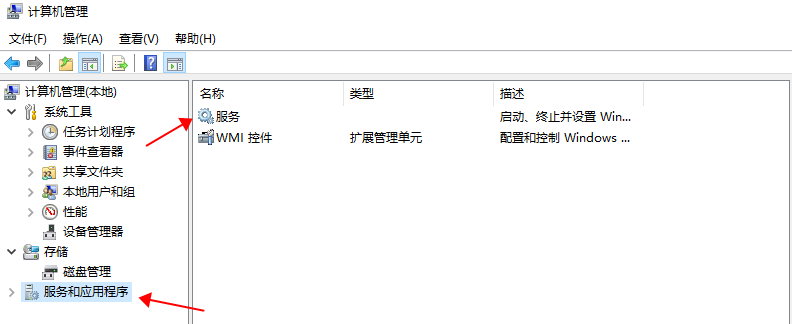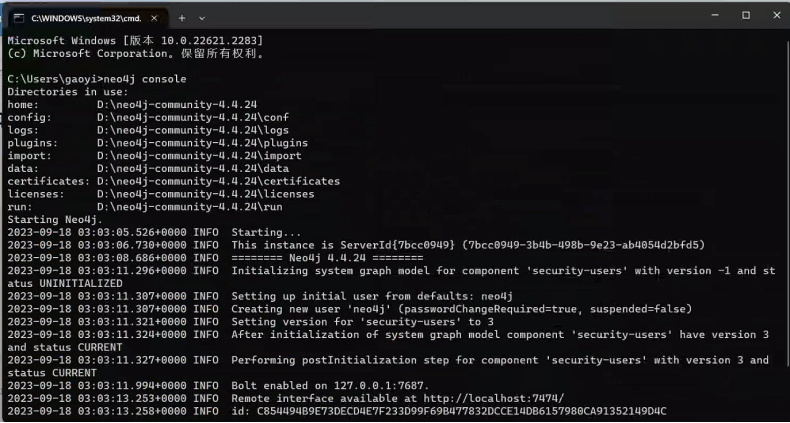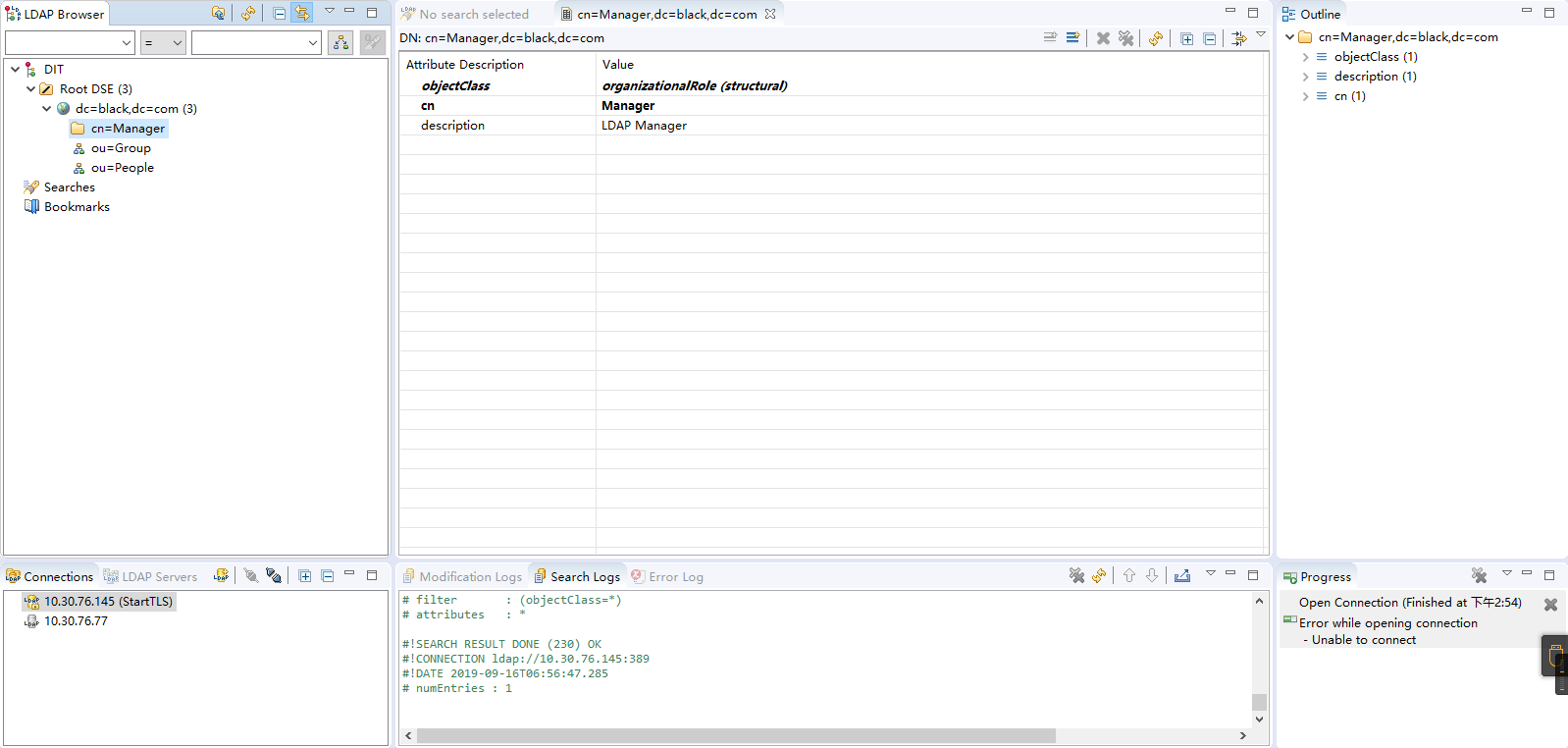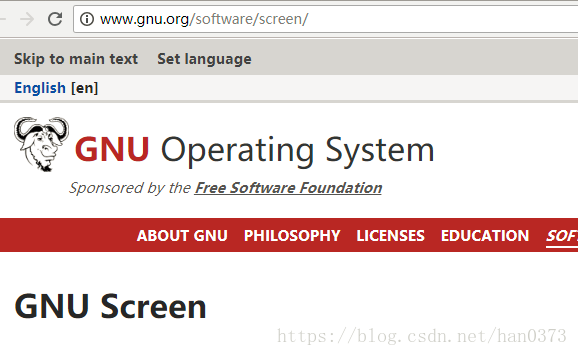Oracle to_char 日期转换字符串语句分享
1》以12小时制显示
SQL>select to_char(sysdate,’YYYY-MM-DD HH12:MI:SS AM’)from dual;
TO_CHAR(SYSDATE,’YYYY-MM-DDHH1
——————————
2007-06-29 02:50:06 下午
2》以24小时制显示
SQL> select to_char(sysdate,’YYYY-MM-DD HH24:MI:SS AM’)from dual;
TO_CHAR(SYSDATE,’YYYY-MM-DDHH2
——————————
2007-06-29 15:00:58 下午
3》得到当前时间的前一分钟
select to_char(Sysdate-1/21/60,’HH24:MI:SS’)from dual;
TO_CHAR(SYSDATE-1/21/60,’HH24:
——————————
15:00:54
4》得到当前时间的后一分钟
select to_char(Sysdate+1/21/60,’HH24:MI:SS’)from dual;
TO_CHAR(SYSDATE+1/21/60,’HH24:
——————————
15:03:53
5》得到当前时间的前一小时
select to_char(Sysdate-1/24,’HH24:MI:SS’)from dual;
TO_CHAR(SYSDATE-1/24,’HH24:MI:
——————————
14:03:13
6》得到当前时间的后一小时
select to_char(Sysdate+1/24,’HH24:MI:SS’)from dual;
TO_CHAR(SYSDATE+1/24,’HH24:MI:
——————————
16:03:32
7》得到当前时间的后一天
select to_char(Sysdate+1,’YYYY-MM-DD’)from dual;
TO_CHAR(SYSDATE+1,’YYYY-MM-DD’
——————————
查询当前时间的前六个月
select add_months(sysdate,-6) from dual
1、转换函数
与date操作关系最大的就是两个转换函数:to_date(),to_char()
to_date() 作用将字符类型按一定格式转化为日期类型:
具体用法:to_date(‘2004-11-27′,’yyyy-mm-dd’),前者为字符串,后者为转换日期格式,注意,前后两者要以一对应。
如;to_date(‘2004-11-27 13:34:43’, ‘yyyy-mm-dd hh24:mi:ss’) 将得到具体的时间
多种日期格式:
YYYY:四位表示的年份
YYY,YY,Y:年份的最后三位、两位或一位,缺省为当前世纪
MM:01~12的月份编号
MONTH:九个字符表示的月份,右边用空格填补
MON:三位字符的月份缩写
WW:一年中的星期
D:星期中的第几天
DD:月份中的第几天
DDD:年所中的第几天
DAY:九个字符表示的天的全称,右边用空格补齐
HH,HH12:一天中的第几个小时,12进制表示法
HH24:一天中的第几个小时,取值为00~23
MI:一小时中的分钟
SS:一分钟中的秒
SSSS:从午夜开始过去的秒数
to_char():将日期转按一定格式换成字符类型
SQL> select to_char(sysdate,’yyyy-mm-dd hh24:mi:ss’) time from dual;
TIME
——————-
2004-10-08 15:22:58
即把当前时间按yyyy-mm-dd hh24:mi:ss格式转换成字符类型
在oracle中处理日期大全
TO_DATE格式
Day:
dd number 12
dy abbreviated fri
day spelled out friday
ddspth spelled out, ordinal twelfth
Month:
mm number 03
mon abbreviated mar
month spelled out march
Year:
yy two digits 98
yyyy four digits 1998
24小时格式下时间范围为: 0:00:00 – 23:59:59….
12小时格式下时间范围为: 1:00:00 – 12:59:59 ….
[ZT]日期和時間函數匯總
1.
日期和字符转换函数用法(to_date,to_char)
2.
select to_char( to_date(222,’J’),’Jsp’) from dual
显示Two Hundred Twenty-Two
3.
求某天是星期几
select to_char(to_date(‘2002-08-26′,’yyyy-mm-dd’),’day’) from dual;
星期一
select to_char(to_date(‘2002-08-26′,’yyyy-mm-dd’),’day’,’NLS_DATE_LANGUAGE = American’) from dual;
monday
设置日期语言
ALTER SESSION SET NLS_DATE_LANGUAGE=’AMERICAN’;
也可以这样
TO_DATE (‘2002-08-26’, ‘YYYY-mm-dd’, ‘NLS_DATE_LANGUAGE = American’)
4.
两个日期间的天数
select floor(sysdate – to_date(‘20020405′,’yyyymmdd’)) from dual;
5. 时间为null的用法
select id, active_date from table1
UNION
select 1, TO_DATE(null) from dual;
注意要用TO_DATE(null)
6.
a_date between to_date(‘20011201′,’yyyymmdd’) and to_date(‘20011231′,’yyyymmdd’)
那么12月31号中午12点之后和12月1号的12点之前是不包含在这个范围之内的。
所以,当时间需要精确的时候,觉得to_char还是必要的
7. 日期格式冲突问题
输入的格式要看你安装的ORACLE字符集的类型, 比如: US7ASCII, date格式的类型就是: ’01-Jan-01′
alter system set NLS_DATE_LANGUAGE = American
alter session set NLS_DATE_LANGUAGE = American
或者在to_date中写
select to_char(to_date(‘2002-08-26′,’yyyy-mm-dd’),’day’,’NLS_DATE_LANGUAGE = American’) from dual;
注意我这只是举了NLS_DATE_LANGUAGE,当然还有很多,
可查看
select * from nls_session_parameters
select * from V$NLS_PARAMETERS
8.
select count(*)
from ( select rownum-1 rnum
from all_objects
where rownum <= to_date(‘2002-02-28′,’yyyy-mm-dd’) – to_date(‘2002-
02-01′,’yyyy-mm-dd’)+1
)
where to_char( to_date(‘2002-02-01′,’yyyy-mm-dd’)+rnum-1, ‘D’ )
not
in ( ‘1’, ‘7’ )
查找2002-02-28至2002-02-01间除星期一和七的天数
在前后分别调用DBMS_UTILITY.GET_TIME, 让后将结果相减(得到的是1/100秒, 而不是毫秒).
9.
select months_between(to_date(’01-31-1999′,’MM-DD-YYYY’),
to_date(’12-31-1998′,’MM-DD-YYYY’)) “MONTHS” FROM DUAL;
1
select months_between(to_date(’02-01-1999′,’MM-DD-YYYY’),
to_date(’12-31-1998′,’MM-DD-YYYY’)) “MONTHS” FROM DUAL;
1.03225806451613
10. Next_day的用法
Next_day(date, day)
Monday-Sunday, for format code DAY
Mon-Sun, for format code DY
1-7, for format code D
11
select to_char(sysdate,’hh:mi:ss’) TIME from all_objects
注意:第一条记录的TIME 与最后一行是一样的
可以建立一个函数来处理这个问题
create or replace function sys_date return date is
begin
return sysdate;
end;
select to_char(sys_date,’hh:mi:ss’) from all_objects;
12.
获得小时数
SELECT EXTRACT(HOUR FROM TIMESTAMP ‘2001-02-16 2:38:40’) from offer
SQL> select sysdate ,to_char(sysdate,’hh’) from dual;
SYSDATE TO_CHAR(SYSDATE,’HH’)
——————– ———————
2003-10-13 19:35:21 07
SQL> select sysdate ,to_char(sysdate,’hh24′) from dual;
SYSDATE TO_CHAR(SYSDATE,’HH24′)
——————– ———————–
2003-10-13 19:35:21 19
获取年月日与此类似
13.
年月日的处理
select older_date,
newer_date,
years,
months,
abs(
trunc(
newer_date-
add_months( older_date,years*12+months )
)
) days
from ( select
trunc(months_between( newer_date, older_date )/12) YEARS,
mod(trunc(months_between( newer_date, older_date )),
12 ) MONTHS,
newer_date,
older_date
from ( select hiredate older_date,
add_months(hiredate,rownum)+rownum newer_date
from emp )
)
14.
处理月份天数不定的办法
select to_char(add_months(last_day(sysdate) +1, -2), ‘yyyymmdd’),last_day(sysdate) from dual
16.
找出今年的天数
select add_months(trunc(sysdate,’year’), 12) – trunc(sysdate,’year’) from dual
闰年的处理方法
to_char( last_day( to_date(’02’ || :year,’mmyyyy’) ), ‘dd’ )
如果是28就不是闰年
17.
yyyy与rrrr的区别
‘YYYY99 TO_C
——- —-
yyyy 99 0099
rrrr 99 1999
yyyy 01 0001
rrrr 01 2001
18.不同时区的处理
select to_char( NEW_TIME( sysdate, ‘GMT’,’EST’), ‘dd/mm/yyyy hh:mi:ss’) ,sysdate
from dual;
19.
5秒钟一个间隔
Select TO_DATE(FLOOR(TO_CHAR(sysdate,’SSSSS’)/300) * 300,’SSSSS’) ,TO_CHAR(sysdate,’SSSSS’)
from dual
2002-11-1 9:55:00 35786
SSSSS表示5位秒数
20.
一年的第几天
select TO_CHAR(SYSDATE,’DDD’),sysdate from dual
310 2002-11-6 10:03:51
21.计算小时,分,秒,毫秒
select
Days,
A,
TRUNC(A*24) Hours,
TRUNC(A*24*60 – 60*TRUNC(A*24)) Minutes,
TRUNC(A*24*60*60 – 60*TRUNC(A*24*60)) Seconds,
TRUNC(A*24*60*60*100 – 100*TRUNC(A*24*60*60)) mSeconds
from
(
select
trunc(sysdate) Days,
sysdate – trunc(sysdate) A
from dual
)
select * from tabname
order by decode(mode,’FIFO’,1,-1)*to_char(rq,’yyyymmddhh24miss’);
//
floor((date2-date1) /365) 作为年
floor((date2-date1, 365) /30) 作为月
mod(mod(date2-date1, 365), 30)作为日.
23.next_day函数
next_day(sysdate,6)是从当前开始下一个星期五。后面的数字是从星期日开始算起。
1 2 3 4 5 6 7
日 一 二 三 四 五 六
oracle中有很多关于日期的函数
在oracle中有很多关于日期的函数,如:
1、add_months()用于从一个日期值增加或减少一些月份
date_value:=add_months(date_value,number_of_months)
例:
SQL> select add_months(sysdate,12) “Next Year” from dual;
Next Year
———-
13-11月-04
SQL> select add_months(sysdate,112) “Last Year” from dual;
Last Year
———-
13-3月 -13
SQL>
2、current_date()返回当前会放时区中的当前日期
date_value:=current_date
SQL> column sessiontimezone for a15
SQL> select sessiontimezone,current_date from dual;
SESSIONTIMEZONE CURRENT_DA
————— ———-
+08:00 13-11月-03
SQL> alter session set time_zone=’-11:00′
2 /
会话已更改。
SQL> select sessiontimezone,current_timestamp from dual;
SESSIONTIMEZONE CURRENT_TIMESTAMP
————— ————————————
-11:00 12-11月-03 04.59.13.668000 下午 -11:
00
SQL>
3、current_timestamp()以timestamp with time zone数据类型返回当前会放时区中的当前日期
timestamp_with_time_zone_value:=current_timestamp([timestamp_precision])
SQL> column sessiontimezone for a15
SQL> column current_timestamp format a36
SQL> select sessiontimezone,current_timestamp from dual;
SESSIONTIMEZONE CURRENT_TIMESTAMP
————— ————————————
+08:00 13-11月-03 11.56.28.160000 上午 +08:
00
SQL> alter session set time_zone=’-11:00′
2 /
会话已更改。
SQL> select sessiontimezone,current_timestamp from dual;
SESSIONTIMEZONE CURRENT_TIMESTAMP
————— ————————————
-11:00 12-11月-03 04.58.00.243000 下午 -11:
00
SQL>
4、dbtimezone()返回时区
varchar_value:=dbtimezone
SQL> select dbtimezone from dual;
DBTIME
——
-07:00
SQL>
5、extract()找出日期或间隔值的字段值
date_value:=extract(date_field from [datetime_value|interval_value])
SQL> select extract(month from sysdate) “This Month” from dual;
This Month
———-
11
SQL> select extract(year from add_months(sysdate,36)) “3 Years Out” from dual;
3 Years Out
———–
2006
SQL>
6、last_day()返回包含了日期参数的月份的最后一天的日期
date_value:=last_day(date_value)
SQL> select last_day(date’2000-02-01′) “Leap Yr?” from dual;
Leap Yr?
———-
29-2月 -00
SQL> select last_day(sysdate) “Last day of this month” from dual;
Last day o
———-
30-11月-03
SQL>
7、localtimestamp()返回会话中的日期和时间
timestamp_value:=localtimestamp
SQL> column localtimestamp format a28
SQL> select localtimestamp from dual;
LOCALTIMESTAMP
—————————-
13-11月-03 12.09.15.433000
下午
SQL> select localtimestamp,current_timestamp from dual;
LOCALTIMESTAMP CURRENT_TIMESTAMP
—————————- ————————————
13-11月-03 12.09.31.006000 13-11月-03 12.09.31.006000 下午 +08:
下午 00
SQL> alter session set time_zone=’-11:00′;
会话已更改。
SQL> select localtimestamp,to_char(sysdate,’DD-MM-YYYY HH:MI:SS AM’) “SYSDATE” from dual;
LOCALTIMESTAMP SYSDATE
—————————- ————————
12-11月-03 05.11.31.259000 13-11-2003 12:11:31 下午
下午
SQL>
8、months_between()判断两个日期之间的月份数量
number_value:=months_between(date_value,date_value)
SQL> select months_between(sysdate,date’1971-05-18′) from dual;
MONTHS_BETWEEN(SYSDATE,DATE’1971-05-18′)
—————————————-
389.855143
SQL> select months_between(sysdate,date’2001-01-01′) from dual;
MONTHS_BETWEEN(SYSDATE,DATE’2001-01-01′)
—————————————-
34.4035409
SQL>
9、next_day()给定一个日期值,返回由第二个参数指出的日子第一次出现在的日期值(应返回相应日子的名称字符串)
與周相關日期函數
1.查询某周的第一天
select trunc(decode(ww, 53, to_date(yy || ‘3112’, ‘yyyyddmm’), to_date(yy || ‘-‘ || to_char(ww * 7), ‘yyyy-ddd’)), ‘d’) last_day
from (select substr(‘2004-32’, 1, 4) yy, to_number(substr(‘2004-32’, 6)) ww
from dual)
select trunc(to_date(substr(‘2003-01’,1,5)||to_char((to_number(substr(‘2003-01′,6)))*7),’yyyy-ddd’),’d’)-6 first_day from dual
select min(v_date) from
(select (to_date(‘200201′,’yyyymm’) + rownum) v_date
from all_tables
where rownum < 370)
where to_char(v_date,’yyyy-iw’) = ‘2002-49’
2.查询某周的最后一天
select trunc(decode(ww, 53, to_date(yy || ‘3112’, ‘yyyyddmm’), to_date(yy || ‘-‘ || to_char(ww * 7), ‘yyyy-ddd’)), ‘d’) – 6 first_day
from (select substr(‘2004-33’, 1, 4) yy, to_number(substr(‘2004-33’, 6)) ww
from dual)
select trunc(to_date(substr(‘2003-01’,1,5)||to_char((to_number(substr(‘2003-01′,6)))*7),’yyyy-ddd’),’d’) last_day from dual
select max(v_date) from
(select (to_date(‘200408′,’yyyymm’) + rownum) v_date
from all_tables
where rownum < 370)
where to_char(v_date,’yyyy-iw’) = ‘2004-33’
3.查询某周的日期
select min_date, to_char(min_date,’day’) day from
(select to_date(substr(‘2004-33′,1,4)||’001’+rownum-1,’yyyyddd’) min_date
from all_tables
where rownum <= decode(mod(to_number(substr(‘2004-33’,1,4)),4),0,366,365)
union
select to_date(substr(‘2004-33’,1,4)-1||
decode(mod(to_number(substr(‘2004-33′,1,4))-1,4),0,359,358)+rownum,’yyyyddd’) min_date
from all_tables
where rownum <= 7
union
select to_date(substr(‘2004-33′,1,4)+1||’001’+rownum-1,’yyyyddd’) min_date
from all_tables
where rownum <= 7
)
where to_char(min_date,’yyyy-iw’) =’2004-33′






